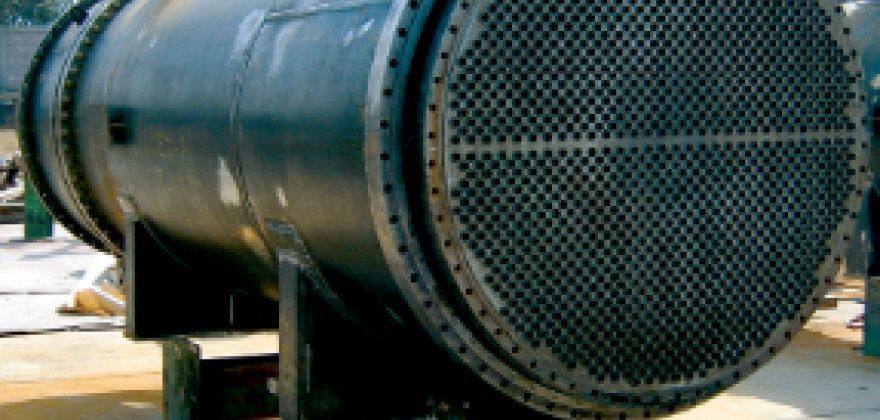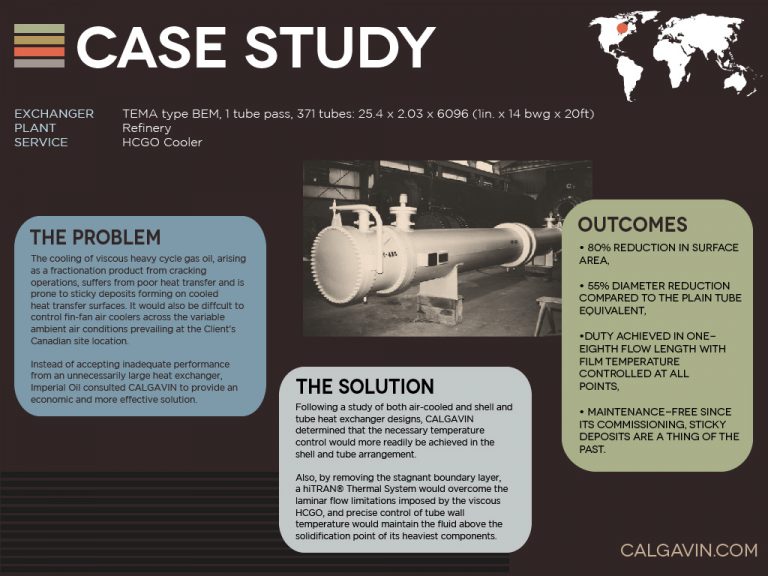Optimising Heat Exchanger Designs for cost reduction

Here at CALGAVIN®, we are frequently approached by OEM’s to support their engineering teams in developing robust heat exchanger designs to help lower capital expenditure costs and increase their competitiveness in the market.
Heat exchangers are the workhorses of hydrocarbon processing utilising enormous amounts of energy to heat and cool processes with variable duties. With the added pressure from the industry to reduce energy, this has driven the grass-root designs of heat exchangers to become more efficient in their performance but at the lowest cost. There are various alternative designs of industrial tubular heat exchangers that have their benefits for their niche applications, but in general conventional TEMA S&T and API air coolers are used. Yet these conventional heat exchangers do present certain design challenges.
To minimise size and cost, both the outside and tubeside heat transfer coefficients should be calculated to make optimal use of the available pressure drop. Even then, with viscous fluids, in particular, there can be large variations between these two heat transfer resistances leading to heat transfer controlled heat exchangers limiting the overall performance. In hydrocarbon services, it is not unusual for the heat transfer coefficient (HTC) on the shellside to be four times that on the tubeside. In order to boost the overall exchanger performance, enhancing the tubeside heat transfer can be used to reduce the required area and thereby size and weight of the exchanger – in some cases dramatically by over 50% in the right applications
Heat Transfer specialists here at CALGAVIN have a plethora of valuable experience in heat exchanger design optimisation to reduce the overall footprint of the exchanger. An effective way to improve tubeside performance is to add hiTRAN® Thermal Systems. These Wire Matrix turbulators solve the problem of poor heat transfer by increasing the turbulence close to the tube wall, eliminating the troublesome boundary layer increasing the heat transfer with forced convection.
When compared to empty tube designs, heat exchangers designed with hiTRAN can typically save capital costs for the same duty by around 50-80% with reduced installation costs reflecting the same.

Therefore, when faced with design constraints due to smaller reduced footprints or restrictive budgets, often reducing the number of exchangers and size can be remarkably beneficial by providing savings on plot size, piping and valves, maintenance and other variables that are influenced by scale. Overall the hiTRAN thermal system design is increasingly more economically competitive compared to conventional designs.
Speak to a member of our team
Our heat transfer engineers have extensive knowledge of thermodynamics, heat transfer and fluid flow combined with the experience of providing solutions to hundreds of plants and engineering teams worldwide.
For more information please contact us on (+44)1789 400401 or email engineering@calgavin.com.




